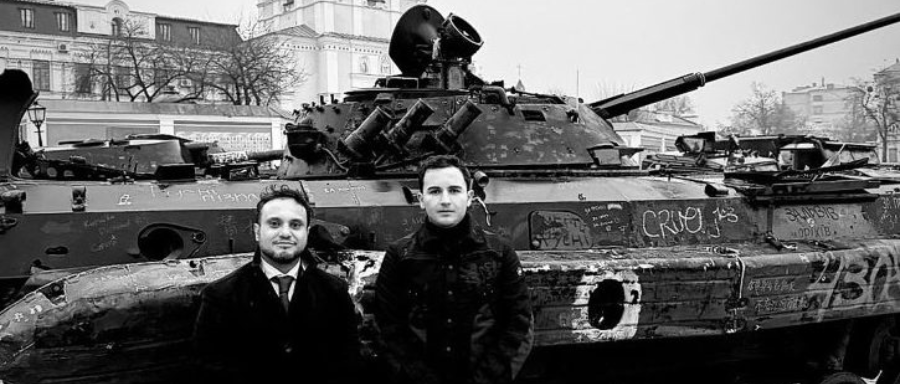Ukraine Faces Record Drone Attacks: What Experts Say About Russia’s Escalation

In recent months, Ukraine has faced an unprecedented escalation of drone attacks, with Russia deploying hundreds of drones against cities and strategic targets. The latest wave, hitting the capital Kyiv, is being described as the most massive drone offensive since the start of the war. Among the targets was a key government building, which was partially set on fire, signaling a new level of symbolic and strategic aggression.
Massive Drone Waves
Military experts warn that this is just the beginning. Russia’s use of drones, particularly the Shahed-type unmanned aerial vehicles, has intensified following the country’s mass production efforts. During the latest attack, Ukraine reported over 800 drones and 13 missiles striking simultaneously.
Experts predict that the number of drones in circulation could rise sharply. “We will see attacks with 1,000, 1,500, or even 2,000 drones,” warns military analyst Nico Lange. The sheer scale of these attacks overwhelms Ukrainian air defenses, making it nearly impossible to intercept every drone and creating additional hazards from falling debris.
Strategic and Symbolic Targets
The attacks are not only about causing physical damage but also about sending a message. Kyiv, as the political and administrative center of Ukraine, is a prime target because Russia continues to claim influence over the entire country. Recent strikes on government buildings illustrate the symbolic power of drone warfare, generating images that circulate worldwide and amplify Russia’s narrative.
Despite the destruction, government officials were reportedly in safe locations during the attacks. Analysts stress that the real danger lies in the psychological and symbolic impact rather than the immediate threat to personnel.
Ukraine’s Defense Needs
The growing threat has highlighted the urgent need for enhanced air defense systems. Experts point to electronic warfare techniques such as jamming and spoofing as critical tools in countering drone swarms. Jamming works by overwhelming the drone’s communication signals, while spoofing tricks drones into following false positional data. Both methods have been used in Ukraine to limit the effectiveness of drone attacks.
Investments in more accessible countermeasures, such as rapid-fire anti-drone cannons and even anti-drone drones, are also being explored. However, long-term mitigation may require targeting the production facilities of these drones, as continuing waves of unmanned aircraft will persist otherwise.
The Broader Context
The increase in drone attacks is partly driven by Russia’s lack of progress on the ground. While the country continues to claim offensive operations, military gains are limited, prompting a shift to air-based strategies. Experts also note that Russia may be aiming to create new waves of displacement, as attacks on cities like Kyiv challenge daily life, schooling, and work routines.
Western support for Ukraine has been significant, but some analysts argue that faster delivery of advanced air defense capabilities is now essential. “Much has been done, but often too late,” says Lange, urging rapid action to strengthen Ukrainian defenses against these increasingly sophisticated attacks.
Looking Ahead
As the conflict evolves, Ukraine’s counterattacks on Russian infrastructure, particularly energy systems, have begun to show early results. Nevertheless, analysts stress that the geopolitical dimension remains complicated, as some European states continue to purchase Russian oil indirectly, sustaining the resources for further attacks.
The situation underscores the need for strategic unity among Ukraine’s allies: stopping payments to Russia, seizing assets, and delivering comprehensive defensive and offensive support could shift the balance. Military experts emphasize that piecemeal diplomacy and isolated summit meetings are insufficient to counter the ongoing escalation.
Conclusion
The recent drone attacks in Ukraine represent both a tactical and symbolic escalation in the ongoing conflict. While the Ukrainian government and population have proven resilient, the scale and intensity of these assaults highlight the need for rapid, coordinated responses from both national defense systems and international partners. The coming weeks will test the effectiveness of air defenses, strategic support, and the ability to mitigate not only physical damage but also the broader psychological and societal impacts of modern drone warfare.





